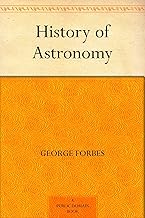Unexplained phenomena in the behavior of pulsars have long puzzled astronomers, with glitches in their rotation offering a glimpse into the mysterious workings of these dead stars. These glitches, characterized by sudden changes in rotation speed, have been attributed to various internal processes such as starquakes or shifts in the star’s superfluid core. However, some glitches defy conventional explanations, presenting smaller and more enigmatic anomalies that continue to intrigue the scientific community.
A recent study led by physicist Innocent Okwudili Eya from the University of Nigeria delves into a bold hypothesis linking these peculiar glitches to hypothetical particles known as ‘strange nuggets.’ According to the researchers, the accretion of these strange nuggets with pulsars could potentially trigger these microglitch events, shedding light on the elusive nature of these unexplained phenomena.
Pulsars, a unique category of neutron stars born from the remnants of massive supernova explosions, exhibit fascinating characteristics such as rapid rotation and intense magnetism. Their rhythmic pulsations, akin to cosmic lighthouses, have made them invaluable tools for a range of astronomical studies, from mapping interstellar distances to exploring the curvature of spacetime near black holes.
While classical glitches in pulsars have been relatively well-documented, the origins of microglitches remain shrouded in mystery. These minute disruptions, often displaying unexpected deceleration patterns, challenge existing glitch models and prompt researchers to consider alternative explanations, such as the interaction of pulsars with strange nuggets.
Strange nuggets, also known as strangelets, represent a theoretical form of matter composed of quarks, the fundamental building blocks of subatomic particles. While these exotic particles have yet to be directly observed, their potential role in phenomena like dark matter has intrigued scientists for decades, offering a tantalizing link to the early evolution of the universe.
Previous studies have proposed the existence of pulsars composed entirely of strange quark matter, suggesting a connection between these enigmatic particles and the puzzling behavior of microglitches. Eya and his team extend this hypothesis by exploring the collision dynamics between strange nuggets and pulsars, offering a fresh perspective on the underlying mechanisms driving these subtle astronomical anomalies.
By analyzing a dataset of recorded microglitches, the researchers infer that interactions between pulsars and strange nuggets could induce sudden changes in rotation, manifesting as both positive and negative glitches. These collisions, occurring within the intense gravitational fields of pulsars, may trigger seismic events within the stars, resulting in observable fluctuations in their rotational dynamics.
While speculative in nature, the study highlights the importance of considering unconventional explanations for celestial phenomena, encouraging scientific exploration and innovation in the quest to unravel the mysteries of the cosmos. As researchers await further developments in this intriguing line of inquiry, the potential implications of strange nuggets on our understanding of pulsar behavior offer a tantalizing glimpse into the frontiers of astrophysics.
📰 Related Articles
- Study Links Feminine Hygiene Products to Increased Infection Risks
- Zimbabwe Study Reveals High Uptake of Menstrual Health Services
- Young Australians Exposed to Online Gambling Risks, Study Reveals
- Wimbledon Technology Glitches Spark Debate on Line Calling Systems
- Why Burro Racing Holds a Strange History in American West






